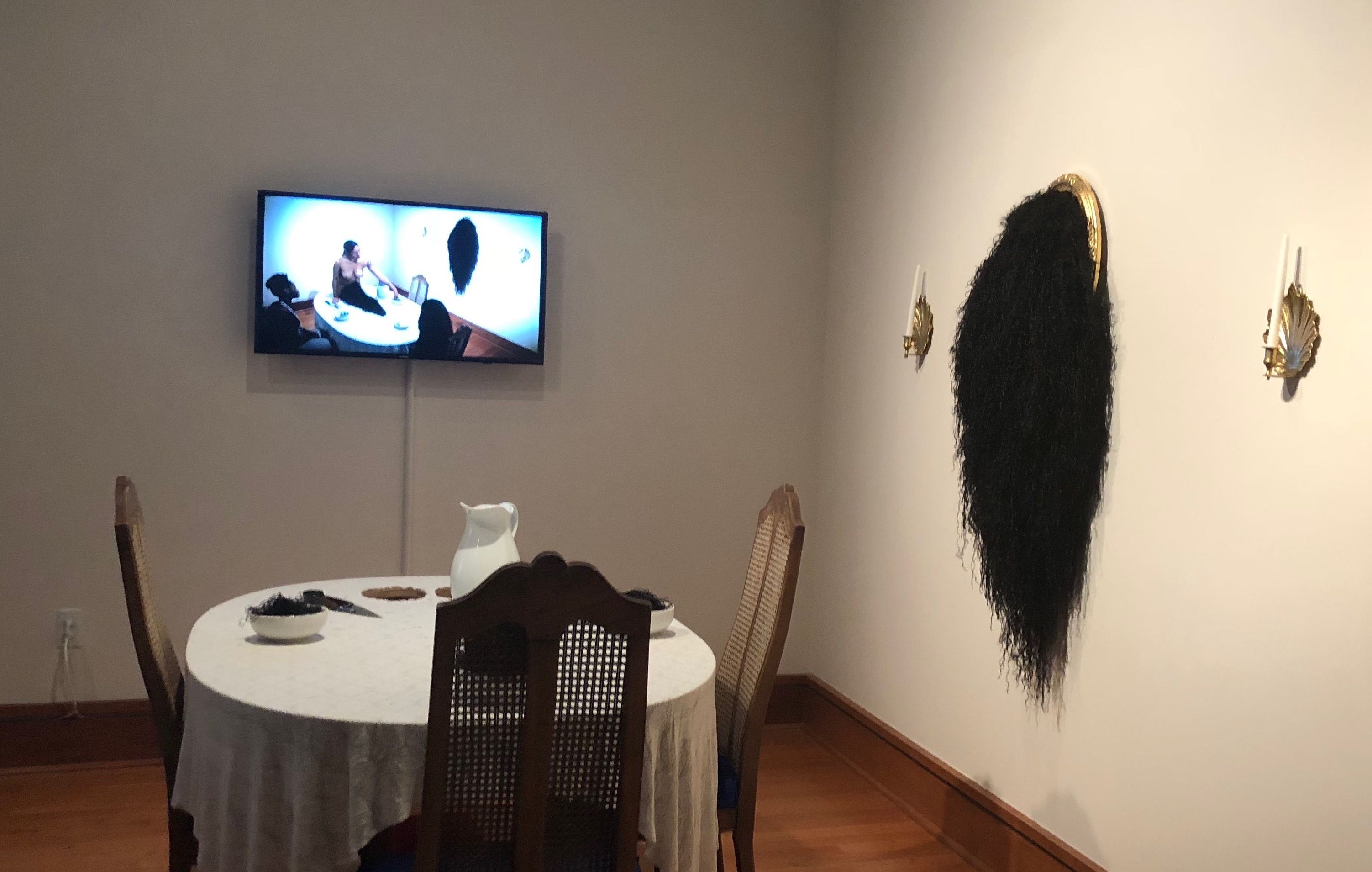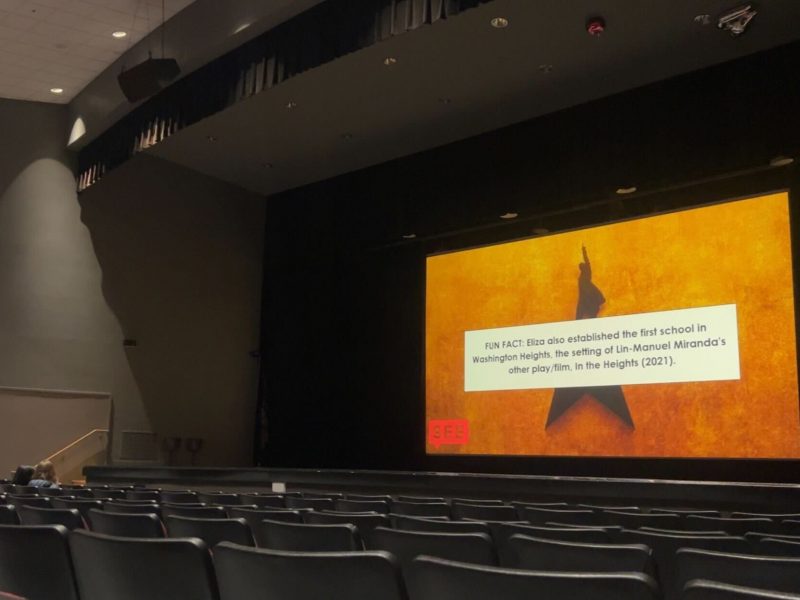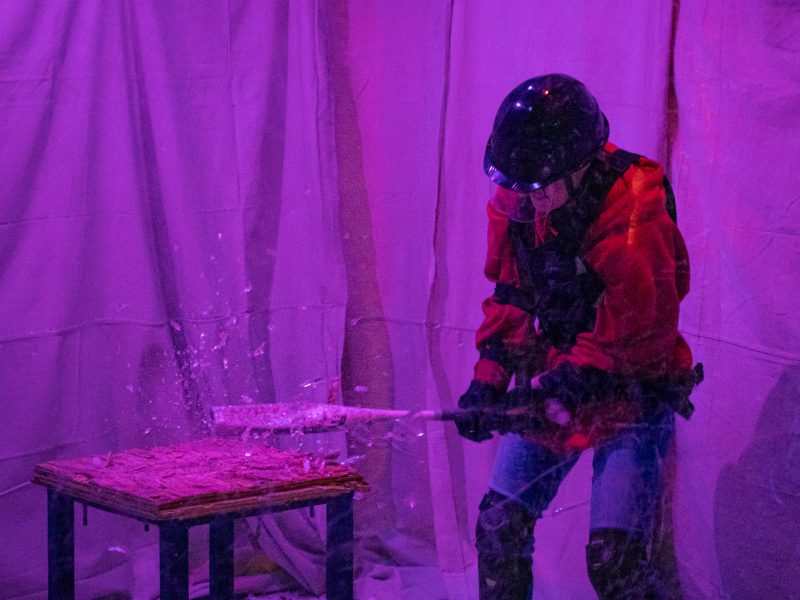Traditional art media like paintings, photos and sculptures capture only a single shot of time. They can be absorbed — although not always fully — with a moment’s glance. But artists are pushing the bounds of art with gallery-worthy pieces that require more interaction from the audience.
Time-based media like film, interactive technology and real-time performance make duration a piece of the artistic puzzle, according to Guggenheim. The David C. Driskell Center, an on-campus art gallery centered on African and African American visual arts and culture, is currently housing one such media exhibit, named Moving Visuals.
On Oct. 4, two artists featured in the exhibit, as well as three other artists who work in the time-based medium, spoke at the Driskell Center to discuss their work and the ins-and-outs of their various and ever-evolving discipline.
Vanessa Jagodinsky performed her piece Consume at the exhibition’s opening on Sept. 13, and a video of that performance now plays on loop above her props. In the performance, audience members sit at a dinner table with a naked Jagodinsky as she grooms a large bundle of hair — which covers a lot of her lower half — and then serves the hair to her guests.
Although her works ask for audience participation, Jagodinsky noted interactive artwork “still exists” even if nobody participates, because the artist still created it.
“It makes me think of being ‘the other’ and how that is how everyone feels at some point,” Jagodinsky said during the panel, regarding different types of audience members. “Someone is always going to come and be there for you, and you have the ones who are just walking right by, and you have the ones that don’t show up. I think every participant or non-participant is interesting in their own way.”
Karina Aguilera Skvirsky has a 30-minute film featured in Moving Visuals. It’s based on her great-grandmother’s 1906 foot journey from Chota to Guayaquil in Ecuador, titled The Perilous Journey of María Rosa Palacios. Skvirsky used to work as a photographer before transitioning to animation and later film.
“I think [that transition] came out of really conceptual practice in the sense that, if media you know isn’t working for what you want to say, find the medium that will work for what you want to say, and that’s I think how I ended up here,” Skvirsky said, drawing approving nods from her fellow panelists.
During the discussion, the artists spoke on how artistic works speak differently to every viewer and how time-based art exacerbates that. Victor FM Torres, who creates a lot of performance work, said it’s more “engaging” and “fun” for him to create art that can potentially change and “has the potential to be interpreted in many more ways than a static composition.”
“You can go in there and step in at minute two and a half and you saw something completely different than if you walked in at minute 10,” Torres said. “And so it’s a different piece for different participants or different audiences, which is very interesting.”
Mixed-media artist Joyce Yu-Jean Lee spoke on her experience executing a pop-up piece in various countries in which participants conducted a search on Google, and were given a comparative view of results from their country and the results they would see behind China’s internet firewall. She shared an anecdote of a human rights lawyer who faced consequences from the Chinese government due to their participation in this project and how such a response to her work was never something she anticipated.
“I think what’s challenging about especially performance-based work is that oftentimes when you open yourself up as an artist to that level of vulnerability, where you have no control over how audiences will react or respond to your work, and the work takes on a second life beyond your own intention, and its ramifications as far as society may be much larger than the artist may even want,” Lee said. “I think that’s a big challenge but also very exciting because it shows that art has power and it has some level of influence.”



